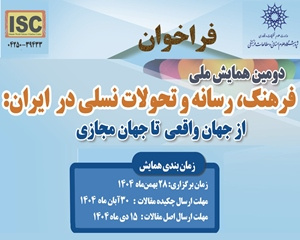فرآیند مشکلات پیرامون پدیده های بلاغی، آوایی و عملی در ترجمه قرآن کریم (مقاله علمی وزارت علوم)
درجه علمی: نشریه علمی (وزارت علوم)
آرشیو
چکیده
پدیده های بلاغی و آوایی از اینکه ساختارهای بنیادین در متن ادبی هستند، از مهم ترین ساز و کارهای زبانی، هنری منحصر به فرد و متمایز در قرآن کریم به شمار می روند. مترجم قرآن کریم هر چند که کار آزموده باشد، گاهی اوقات در بسیاری از موارد از انتقال تصویرهای بلاغی و آوایی درمانده خاطر می گردد. این در واقع برای سامان دادن به دلالت و مفهوم جمله می آید، به گونه ای که با توجه به حلقه اتصال بسیار محکم میان تصویر و مفهوم ناقص مانده است. در این پژوهش نویسندگان تلاش نموده اند تا با استعانتِ نمونه هایی از این پدیده های بلاغی و آوایی مجسم شده در بسیاری از آیات قرآنی، این مشکل را به عرصه نمایش بگذارند، مشکلی که با توجه به خصوصیت و ویژگی ترجمه، آن را تحت شعاع قرار نمی دهد. بنابراین برخی از راه حل هایی را که بدان دست یازیدیم ارائه می نماییم و نیز با آشنایی به برخی از جانشین های احتمالی در آن با استفاده از تجربه های صاحب نظران در زمینه ترجمه از آن ها استفاده نموده ایم.The Process of Problems on Rhetorical, Phonetic and Practical Phenomena in the Translation of the Holy Quran
The rhetorical and phonetic phenomena of the fundamental structures in the literary context are considered to be one of the most important linguistic, unique and distinctive artistic mechanisms in the Holy Quran. The translator of the Holy Qur'an, though skilled in the work, sometimes relies on the transmission of rhetorical and phonetic imagery in many cases. This is actually to arrange the meaning and meaning of the sentence, as the link between the image and the concept is incomplete due to the loop. In this study, the authors have attempted to convey this problem to the play by citing examples of these rhetorical and phonetic phenomena embodied in many Qur'anic verses, a problem that does not overshadow the nature of translation. So we present some of the solutions we've come up with, as well as familiarizing ourselves with some of the possible alternatives to it, using the experts' experience in translation.








